March 16, 2021
Welcome Innovation Crossroads Cohorts
Accelerating Your Innovation at Oak Ridge National Laboratory
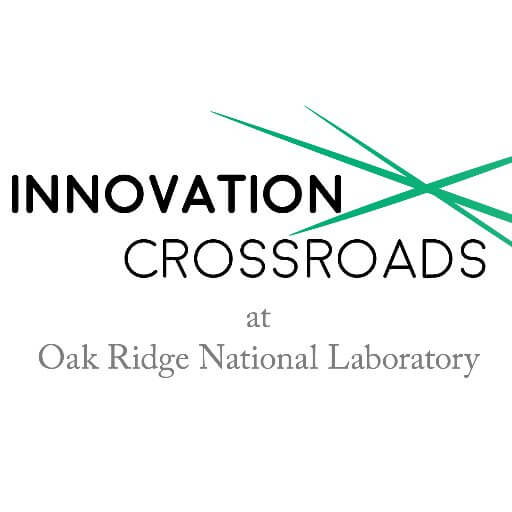
Clean-tech hardware-based startups are challenging. They require significant risk, capital and time. Oak Ridge National Laboratory (ORNL) works to support businesses in this field to combat these challenges through Innovation Crossroads, a fellowship program, that provides innovators with the needed resources to develop and de-risk their technology.
Throughout the two-year program, aspiring energy and advanced manufacturing entrepreneurs are linked with experts, mentors and networks in technology-related fields to take their world-changing ideas from R&D to the marketplace.
The Knoxville Chamber is honored to welcome the 2021 cohort to the region. Below a short bio has been compiled on the innovative businesses and entrepreneurs that are apart of the current program, as well as an overview of their critical purpose to the economy.
Cohort Two:
Don DeRosa – Eonix
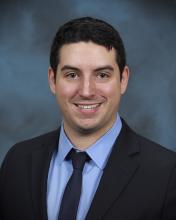
Don DeRosa is developing next-generation electrolytes that will significantly lower the cost and size of ultracapacitor modules. The resulting lower-cost modules can be used in tandem with lithium-ion batteries to dramatically improve the efficiency, range and longevity of both hybrid and electric vehicles. He received his Ph.D. in nanoscience from the State University of New York at Albany and is the co-founder and Chief Executive Officer of Eonix.

Eonix was originally spun out of the College of Nanoscale Science and Engineering (CNSE) to explore the commercialization of 21 novel ionic liquid electrolytes for ultracapacitors developed through a series of New York State Energy Research and Development Authority (NYSERDA) grants. After receiving a National Science Foundation (NSF) i-Corps Award to explore the market potential of these electrolytes, they discovered that ultracapacitor device manufacturers were hampered far more by cost rather than device performance, contrary to claims. These concerns regarding device cost were echoed in the interviews later conducted with representatives at automotive OEMs. Despite the automotive performance advantages offered by ultracapacitors and demonstrated in various markets, ultracapacitors would not be adopted for hybrid and electric vehicles by domestic automotive companies without a significant reduction in cost and size.
At the conclusion of i-Corps, Eonix was awarded a $250k NYSERDA grant to further study different electrolyte solutions. By leveraging the diverse characterization resources available at the CNSE, Eonix observed the impact of different electrolyte compositions on the degradation of these devices when exposed to a larger potential window. A novel salt that reduced device resistance by 40% was developed during this project. Eonix now aims to leverage this highly conductive salt to develop an electrolyte that expands the potential window of ultracapacitor devices from 2.7V to 3.5V.
Critical Need for This Technology
Ultracapacitors have the potential to transform the energy storage marketplace as a power-dense system to complement emerging low power, energy-dense technologies, such as solid-state lithium-ion batteries, in transportation and grid storage applications. The adoption of these devices by the automotive industry has been impeded by the high cost and large size of ultracapacitor modules. The development of a high voltage electrolyte would significantly lower the cost and size of ultracapacitor modules by expanding individual cell voltages from 2.7V to 3.5V, thus reducing the total number of cells needed per module. The resulting lower cost and smaller ultracapacitor modules can be used in tandem with lithium-ion batteries to dramatically improve the efficiency, range, and longevity of hybrid and electric vehicles by reducing the need to oversize the battery pack for the high-power strain imposed by acceleration and regenerative braking.
Shane McMahon – Lux Semiconductors

Shane McMahon is developing thin-film semiconductor substrates that will serve as a novel platform for highly integrated and flexible electronic devices. The platform will provide the ability to integrate core Internet of Things (IoT) functionality, including sensors, logic, memory, communication and power. Shane holds a Ph.D. in Nano-Engineering from the SUNY Polytechnic Institute and is the co-founder and Chief Executive Officer of Lux Semiconductors.
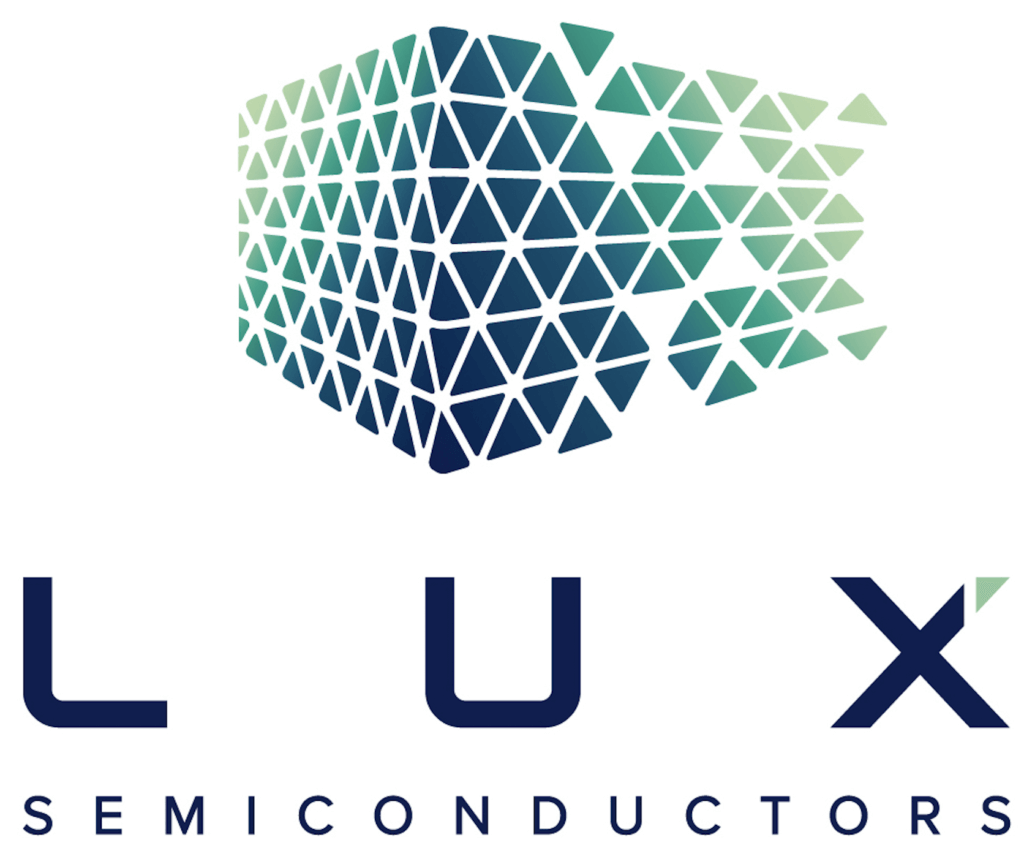
Lux Semiconductors can significantly improve the performance of large area, thin-film semiconductors through a patent pending recrystallization process. By leveraging a century of innovations in bulk crystal growth and applying them to low cost thin-films for the first time, Lux will deliver an entirely new class of flexible semiconductors to serve as a next generation material platform for integrated electronics. The platform will be suitable to host a range of electronic components and fully integrated system-on-chip designs including sensors, RF, displays, lighting, processors, memory, micro-electro-mechanical systems (MEMS), energy harvesting and similar IoT devices. The company was founded in April 2017 by Dr. Shane McMahon and Dr. Graeme Housser. The company is co-located at ORNL, in Oak Ridge, TN and at the SUNY Polytechnic Institute in Albany, NY. Lux is developing and commercializing technology spawned from Ph.D. research conducted on behalf of the founders during their tenure at the SUNY Polytechnic Institute. Since 2017, Lux has raised a total of $1,000,000 in non-dilutive grant funding including, most notably, a National Science Foundation SBIR Phase 1 award, a Department of Energy sponsored Innovation Crossroads award, and a Department of Defense Air Force Research Laboratory SBIR Phase 1 award. Lux has also received funding from NEXUS-NY, FuzeHub and RIT Venture Creations.
Critical Need for This Technology
Ninety percent of all electronic devices are built on a semiconductor substrate. There has been no material more commonly used to serve this purpose than the silicon wafer. The silicon wafer, in its current form, is essentially unchanged since its inception over 60 years ago. These wafers, although larger today, remain thick, rigid, fragile, and are limited to circular forms no larger than 300 millimeters (12 inches) in diameter. These features are acceptable to electronic device manufacturers building rigid, or non-flexible, devices. However, within the flexible electronics arena, a flexible semiconductor substrate is required. Due to a lack of techniques capable of producing high-quality, low-cost silicon or other semiconductor films, the industry has yet to see a flexible semiconductor substrate emerge to fulfill this new role. Therefore, the ability to produce large-area, high-throughput quantities of thin-film semiconductor material, in a flexible, more durable format would help to usher in the next generation of affordable, flexible, and highly integrated electronic devices.
Justin Nussbaum – Ascend Manufacturing
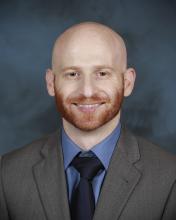
Justin Nussbaum is focused on developing a manufacturing grade additive manufacturing system, utilizing a technology he developed called Large Area Projection Sintering (LAPS). LAPS offers many advantages over new and traditional additive manufacturing technologies. With LAPS, components can be economically created with drastically increased production rates, process a broader range of materials and provide superior mechanical properties while fully integrating quality control and assurance measures. He completed his Ph.D. in mechanical engineering at the University of South Florida and is now the founder and Chief Executive Officer of Ascend Manufacturing.

The manufacturing industry in the US today is a massive $2.3 trillion dollars. Manufacturing provides the backbone to our nation in which all other industries benefit from and rely on. As our manufacturing capabilities are improved, the U.S. can provide faster, cheaper and higher quality parts/services while achieving economic competitiveness to keep manufacturing and all of its jobs at home. One such technology which is driving this charge is additive manufacturing (aka 3D printing). Additive manufacturing allows small businesses and large corporate companies to bring new devices to market at drastically reduces costs and time scales due to the rapid nature of prototyping with 3D printing. Many times, additive manufacturing can decrease prototyping costs and timelines by over 90% over traditional methods. The nation is moving towards the fourth industrial revolution where components are created on-site when they are needed, completely eliminating shipping costs and emissions and reducing the cost and complexities of warehousing large inventories. While current additive manufacturing technologies can address this issue due to their ability to create components without molds, none currently have the production speed or quality to satisfy this need.
Ascend Manufacturing designs and fabricates novel industrial additive manufacturing equipment born out of industrial need. Their new technology is the first technology to truly enable agile manufacturing industry 4.0 which perfectly supplements existing manufacturing technologies. The new technology used in these systems are able to provide components for prototyping or production in low to high volumes, with superior mechanical performance and with exotic materials. The goal is to supplement conventional manufacturing technologies (such as machining, injection molding, thermoforming, etc) with the ability to economically and quickly create components and quantities, previously out of reach of these manufacturing technologies. Furthermore, this can be achieved on-the-fly with no tooling costs or lead times, the ability to create complex structures without any trade-offs (increased fabrication time or added cost) while also providing superior components and the capability to provide mass customization where every part can be individually customized.
Critical Need for This Technology
In manufacturing today, no economical technologies exist that allow components to be created in small and large volumes with the same equipment at an economical price. Generally, the part quantity, size and geometry dictate what type of technologies are required to make a part. Most technologies focus on creating either small (machining, laser cutting, additive manufacturing) or large (injection molding, thermoforming, etc) volumes of components. This requirement forces manufacturers to purchase and operate a large variety of industrial equipment. Additionally, conventional additive manufacturing systems are well known to have low throughput speeds when compared to mass manufacturing technologies and struggle to meet quality assurance guidelines. This has restricted its use to prototyping and low-volume production runs.
The systems provided by Ascend Manufacturing are capable of creating single components to hundreds of thousands, each day, from every machine. Since they utilize an additive technology, making complex shapes does not increase the fabrication time or cost. These systems fulfill the needs of a large range of manufacturing requirements and addresses a gap that exists between economically and rapidly creating large volumes of high-quality components. Furthermore, the components created with this system have superior mechanical performance when compared to other powder bed technologies and can use a larger variety of materials.
Megan O’Connor – Nth Cycle

Megan O’Connor is developing a recycling technology that utilizes carbon nanotube membranes for enhanced separation and recovery of solid rare earth and specialty elements (RESE)-oxides. If successful, this technology will provide a high-throughput electrochemical recovery process for recycling RESE as an alternative to the conventional energy-intensive extraction and refining processes currently used to obtain these metals for manufacturing. She holds a Ph.D. in civil and environmental engineering from Duke University and is co-founder and Chief Executive Officer of Nth Cycle.
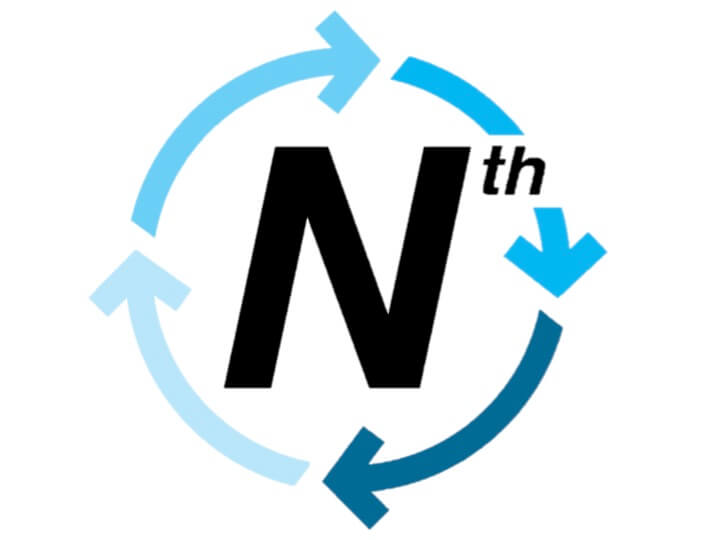
Nth Cycle was created to disrupt the electronics manufacturing and recycling industries by changing their linear material model into a more efficient, circular one. The company’s mission is to help transition the United States away from their reliance on primary mining and refining of metals overseas, toward the recycling of rare earth and specialty metals (e.g., Co, In, and Y) domestically from (1) the electronics and semiconductor manufacturing processes themselves, and (2) the products at their end-of-life during the recycling process, for reuse in future advanced manufacturing processes.
Critical Need for This Technology
As the world pushes toward a carbon-free future and new technologies increasingly rely on rare earth and specialty elements, concern has risen surrounding the economic, environmental and socio-geopolitical stability of the long-term supply of these metals. With demand approaching and exceeding our current supply rates, and the majority of global production of these raw materials coming from undesirable, non-domestic locations, the U.S. Department of Energy (DOE) has labeled certain rare earth and specialty metals as most critical with respect to their significance to clean energy. As a result of this metal criticality, there has been a movement toward better material management practices to create a secondary source of RESE to support the DOE and the rest of the world on their mission to achieve a secure and sustainable energy future. To achieve this goal, the focus has been on improving material efficiency in the manufacturing stage and enhancing recycling management strategies in the end-of-life stage.
Many of the advanced electronic, semiconductor, and energy storage technology manufacturing and waste streams could serve as viable sources of secondary RESE if efficient separation methods existed to recover these metals for reuse. Such an achievement could yield a 10−20 fold reduction in energy consumption through the use of recycled metal versus acquiring primary metal from mining operations. In response to this need, Nth Cycle has developed a novel recycling technology that utilizes carbon nanotube membranes for enhanced separation and recovery of these valuable materials for reuse in the clean energy and electronic sectors.
Matthew Smith – TCPoly
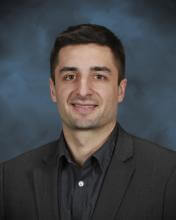
Matthew Smith’s new class of high thermal conductivity plastic composite materials aim to improve heat dissipation, allowing for metal replacement and light-weighting, cost and component reductions, and improved performance and reliability. These materials also exhibit the unique ability to be 3D printed, allowing thermal engineers to rapidly and inexpensively prototype multi-functional thermal solutions and enabling the design of heat transfer products that cannot be manufactured using traditional methods. He holds a PhD in materials science and engineering from the Georgia Institute of Technology and is co-founder and Chief Executive Officer of TCPoly.
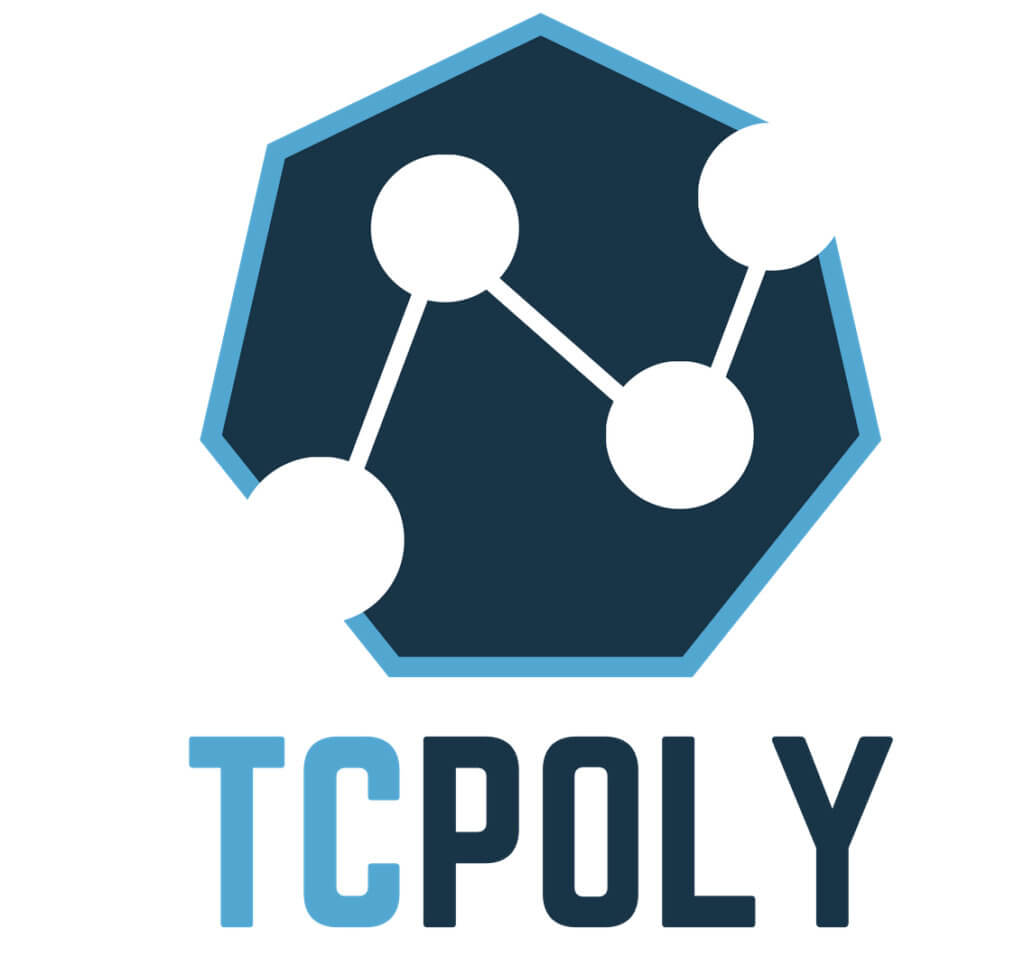
TCPoly is an advanced materials company that has developed high thermal conductivity 3D printing filaments and uses their patented materials to fabricate thermally conductive tooling, heat exchangers and other thermal management devices. TCPoly’s vision is to enable high-volume 3D printing manufacturing by combining the design freedom of low-cost FDM production with their functional materials to produce new, value-add products. As 3D printing technology continues to mature, TCPoly will leverage IP in materials, thermal products, and printing hardware and software to enable companies to own the manufacturing process and farm 3D print their own functional products.
Critical Need for This Technology
Plastics are light-weight, corrosion-resistant, low cost and offer enhanced design freedom relative to metal parts. However, their low thermal conductivity limits their use in many thermal applications. The need for additively manufactured and thermally conductive tooling that can heat up and cool down quickly, light-weight and corrosion resistance heat sinks and heat exchangers, and electrically insulating and thermally conductive parts in electronics all drive the need for thermally conductive plastics.
Cohort 3
Jesse Claypoole – MantaPoole Technologies

Mantapoole is developing a roll-to-roll, manufactured, active multispectral light field (AMLF) micro-optics architecture for applications including autonomous surgery, industrial manufacturing, robotic farming and real-time robot vision. Founder and CEO, Jesse Claypoole, earned a Ph.D. in Nanoscale Science at the State University of New York Polytechnic Institute.
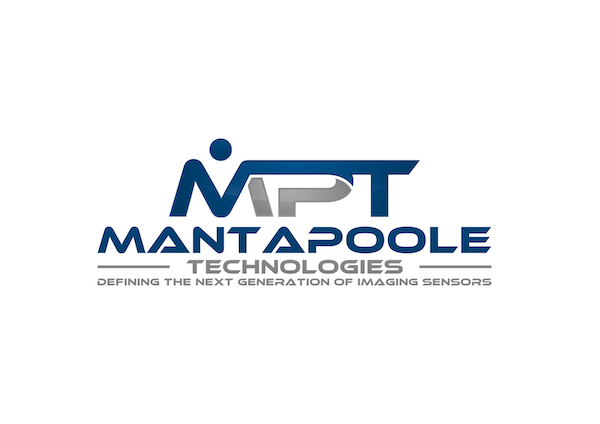
With the development and proliferation of smart machines that can increasingly autonomously interact with the real work, it is important that these smart machines are increasingly able to make decisions based on real-world variables. In order to make these decisions, these smart machines will need the correct amount and type of information and essentially the capabilities of these smart machines are limited by the capabilities of their sensors. In order to address this problem, MantaPoole technologies is developing a next-generation imaging solution that can enable machines to see the “what” and “where” of their application in a single camera form factor. This advanced capability is enabled by the novel optical system MantaPoole Technologies is developing called Plenoptics 3.0. Plenoptics 3.0 will enable the capture of both spectral and depth information without a reduction of the image quality. This advanced imaging solution will enable smart machines to tell what an object is made of, its shape and where it is.
Critical Need for This Technology
In order for smart and autonomous machines to become commonplace in the world, they will need an affordable sensor solution that can give the correct amount and type of information to allow these machines to interact with the real world. Current commonly used approaches use standard 2D imaging sensors or expensive groups of sensors like lidar along with machine vision to interact with the real world. The problem with the current approaches is that they are either unaffordable to the average person or do not provide the correct amount and type of information for a smart machine to flexibly interact with the real world. MantaPoole Technologies is addressing this problem by developing a new kind of imaging sensor that can capture multispectral and depth information in an affordable compact single-camera form factor. This capability will allow smart machines to see the “what” and the “where” in their application and better make the correct decisions based on real-world variables.
William Fitzhugh – American Nanotechnologies, Inc.

American Nanotechnologies is developing and demonstrating novel systems for the large-scale purification of high-value dielectric materials that can reduce the cost of semiconducting carbon nanotube production by orders of magnitude. William is a PhD candidate in applied physics from Harvard University.
Many dielectric materials needed for next-generation technologies can be synthesized at an industrial-scale but require post-synthesis purification that cannot be performed cost-effectively. American Nanotechnologies, Inc. (ANI) is developing technology for large-scale phase separation of dielectric materials. If successful, the implementation of these systems could drastically improve the efficiency and scale of manufacturing high-purity dielectric materials.
Critical Need for This Technology

Current industrial-scale chemical refinement/purification methods are dominated by thermal (e.g. distillation) and physical (e.g. centrifugation) separation methods. However, many advanced materials are thermally and physically similar to the present impurities making these methods expensive and inefficient. Such materials require the development of electronic separation technology prior to any commercial adoption.
Hicham Ghossein – Endeavor Composites, Inc.
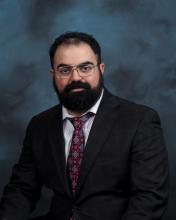
Endeavor Composites is designing and implementing an innovative mixer system for the hydroentanglement process that offers several advantages over the current fiber dispersion techniques. Hicham earned a PhD in mechanical engineering from the University of Tennessee, Knoxville.
Endeavor Composites, Inc.; a spin-off from exclusively licensed technology of the University of Tennessee, Knoxville (UTK); is implementing an innovative mixer system for the hydroentanglement process that offers several advantages over the current fiber dispersion techniques. The innovation evolves around the ability to disperse long (one to one and a half inch) carbon fiber (CF) to produce, on a continuous scale, defect-free non-woven mats and preforms with excellent quality control (density std. deviation below 3%).
Critical Need for This Technology

The rise of carbon fiber reinforced composites due to its high strength to weight ratio, created an abundant amount of scrap fibers and recycled fibers. A call for a solution to prevent the waste of said fibers materialized through the work of Endeavor Composites, Inc. to transition it into long fiber non-woven mats.
Alex Lewis – Electro-Active Technologies Inc

Electro-Active Technologies is developing a microbial electrolysis system to extract energy from organic waste streams to produce renewable products such as hydrogen. Alex earned a Ph.D. in energy science and engineering from the University of Tennessee, Knoxville.
Electro-Active Technologies is developing a modular system to convert organic waste into renewable hydrogen. The underlying technology is called microbial electrolysis, which contains a microbial community that has been designed to work synergistically to produce electrons from waste. They grow these microbes as a biofilm on the anode which actively extracts the electrons and drives hydrogen production at the cathode in our microbial electrolysis cell. This technology can enable companies and waste haulers to more effectively process organic waste while producing low-cost zero-emission fuel in the form of hydrogen.
Critical Need for This Technology

A deeper understanding of the microbial community dynamics in order to sustain high performance at scale.
Trevor McQueen – Neptune Fluid Flow Systems

Neptune Fluid Flow Systems is developing an advanced thin-film cryogenic sample preparation device designed to substantially improve sample preparation for the transmission electron microscopy (TEM) community. Trevor earned a Ph.D. in chemistry from Stanford University.
As a society that believes in a better future, they constantly seek new ways and new methods to improve our healthcare and manufacturing capabilities. Over the years, the U.S. has invested trillions of dollars in areas of development such as the discovery of new drugs and therapeutics to lengthen and enrich our lives, and the synthesis and characterization of new materials to build more energy-efficient buildings and safer consumer products.
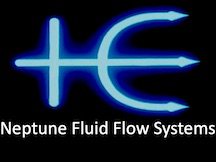
Neptune Fluid Flow Systems LLC is a scientific hardware startup founded in 2016 by Dr. Trevor McQueen to improve the sample preparation, handling, and delivery processes for scientific research. Their current mission is to assist structural biologists and material scientists by making cryo-transmission electron microscopy (cryo-TEM) a reliable, reproducible, and repeatable way to visualize and study the three-dimensional soft material structures in order to advance drug design and advanced manufacturing industry in the U.S.
Critical Need for This Technology
The field of cryo-TEM has exploded rapidly due to recent advances in detector technology and software algorithms, which makes near-atomic resolution achievable and simplifies many of the technical issues associated with three-dimensional reconstruction of biological soft materials in a near-native, hydrated state. Despite the tremendous amount of improvements happening on the downstream end of cryo-TEM workflow, sample preparation remains a largely unsolved problem given the issues of sample degradation and aggregation at the hydrophobic water-air interface—something that cannot be addressed by the current state-of-the-art cryo preparation system. In fact, due to reliability concerns over the current device, a large percentage of customers abandon the semi-automatic system entirely and instead prepare their samples entirely by hand!
Leila Safavi – Purist Inc.

Purist is developing a platform technology that can be implemented in existing underutilized research reactor infrastructure nationwide for local and on-demand medical-grade radioisotope production. Co-founder and CEO, Leila Safavi, earned a Ph.D. in chemical and biochemical engineering from the University of California, Irvine.
Medical radioisotopes are time-sensitive radioactive ingredients that are used for the diagnosis and treatment of life-threatening diseases such as cancer. In recent years the availability of these ingredients has become a source of concern due to dependence on a limited number of aging production facilities worldwide. To overcome this concern and meet the growing demand for medical radioisotopes, Purist is developing a technology to enable a distributed network of small-scale and underutilized nuclear reactors to produce high-purity radioisotopes. Purist will complement the efforts of existing production facilities to serve the current and growing demand of the medical radioisotope market, increase domestic radioisotope production capabilities, and work towards ensuring no medical procedure is compromised due to radioisotope supply constraints.

Critical Need for This Technology
The global supply of reactor produced radioisotopes depends on a limited number of production facilities worldwide. The majority of these facilities are not in the United States, causing concern for the healthcare industry and R&D communities that rely on these radioactive ingredients. As a result, there is a pressing need for the development of radioisotope production technologies to increase our domestic capabilities, while ensuring the radioisotope supply will meet the current and growing demand.
Jesse Thornburg – Grid Fruit
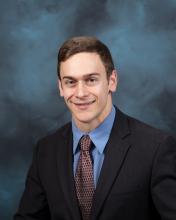
Grid Fruit is developing and evaluating a novel technology and operating framework for monitoring and control of commercial refrigeration systems installed at food retailers. CEO, Jesse Thornburg, earned a Ph.D. in electrical and computer engineering from Carnegie Mellon University.
Grid Fruit uses artificial intelligence (AI) and data to keep food fresh while reducing the energy needed for commercial refrigeration. The technology simultaneously procures savings for food retailers and provides grid services for electrical utilities.
Grid Fruit evaluates and then improves the performance of refrigeration systems in terms of energy and food quality. They plan to leverage this information for intelligent asset management including fault detection and predictive maintenance. Grid Fruit will also improve the performance of refrigeration systems by providing custom operational recommendations. Finally, with better monitoring and control the technology will be able to leverage the thermal storage capacity of retailer refrigeration systems as energy storage (thermal batteries) for the grid.

Critical Need for This Technology
In supermarkets, 50-60% of the electrical energy goes to refrigeration. Oak Ridge National Lab estimates that up to a fifth of this refrigeration energy is wasted with the legacy control systems and operational norms. At the same time, data is collected from across the system and hardly used except when emergency maintenance or replacement is needed. Grid Fruit uses this data to reduce the waste and improve the bottom line for food retailers that currently run at very low-profit margins of 1-2%.
Cohort 4
Renee Carder – PixelEXX Systems
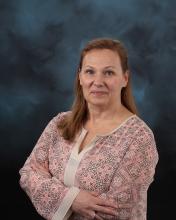
Renee Carder’s photo sensor technology uses resonances called Mie that improve photo sensor performance by increasing light sensitivity by concentrating the amount of light available to the photo sensor based on the sensor’s optical, rather than its physical cross-section. As a result, optical absorption can be dramatically enhanced. The resonance mechanism also eliminates the need for filters and gratings. By providing more pixels per spot of light, information can be combined to sharpen contrast and reduce noise for unprecedented high-resolution images in a small package. Carder holds a Ph.D. in neurology, anatomy and cell science from the University of Pittsburgh.

PixelEXX Systems—reinventing cameras to capture, analyze, and interpret the world around us. The PixelEXX imaging technology uses the company’s proprietary Mie Photo Sensors. With Mie Photo Sensors, focal plane array imaging chips can measure far more light than today’s imaging chips. This enables imaging over a much larger range of light intensities than can be achieved today as well as measuring far more of the image lights properties which can deliver enhanced color (multispectral) and polarization without the need for filters or multiple cameras. Our Innovation Crossroads project will explore using PixelEXX’s Mie Photo Sensor as a silicon photomultiplier (SiPM) that could deliver wider dynamic range, faster recovery times and lower dark current than any of today’s SiPMs. High-performance SiPMs are a crucial component in many demanding applications-they are a core component in Positron-Emission Tomography (PET), a key medical diagnostic technology and are of growing importance in many scientific tools.
Critical Need for This Technology
The majority of the data needed for artificial intelligence to have human (or better than human) skills will rely on the ability for computers to translate high quality visual data. This will require cameras with substantially 1) improved image quality, 2) maximum information gleaned from each photon, such as timing, wavelength and polarization and 3) reduced Size, Weight and Power requirements (SWaP).
Danielle Castley – Becq

Danielle Castley is developing a high-temperature, lightweight neutron-shielding technology that will help reduce costs and increase safety in the nuclear industry. This technology operates at a temperature that is 50% higher than existing polymer-based neutron-shielding products. The higher operating temperature introduces significant opportunities for deploying neutron shielding materials in higher-temperature locations within the reactor containment and/or to improve the safety margin in applications originally designed for shielding with a lower operating temperature. Castley holds a Ph.D. in materials science and engineering from Dartmouth College.
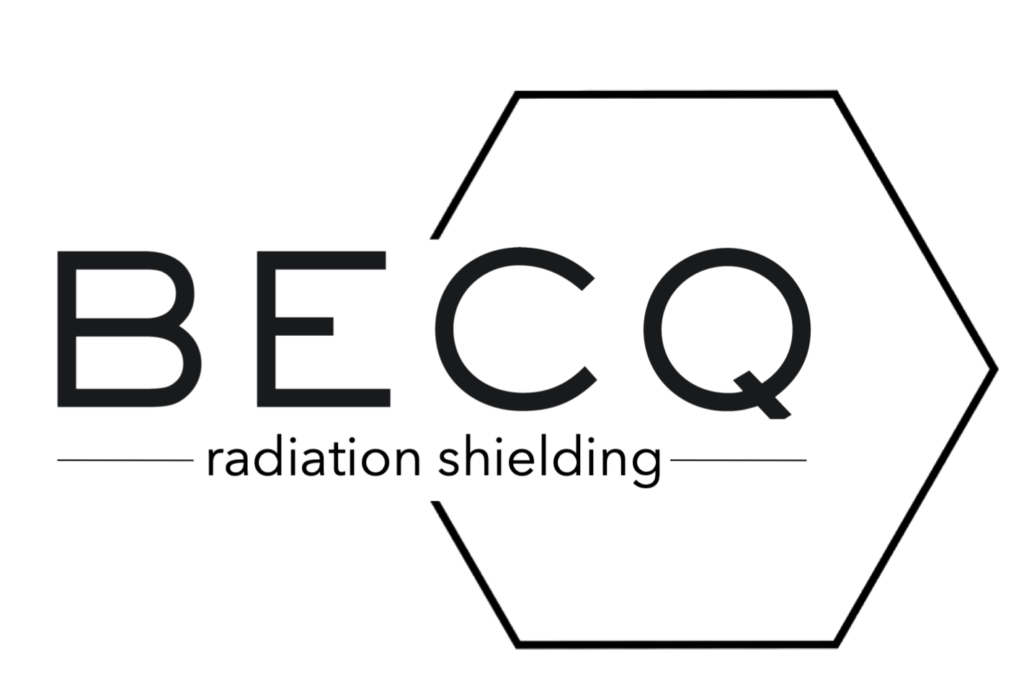
Becq is a radiation shielding materials company whose technology will help to reduce costs and increase safety in the nuclear industry. Becq’s core competency is currently neutron shielding technology. Innovation in the neutron shielding market has lagged in the past several decades and Becq’s technology is a breakthrough for the field. Becq’s initial product offering, NE-300, is a lightweight, high-temperature neutron shielding material. The key differentiation of NE-300 over existing materials is an operating temperature of 300oC instead of 180oC. The higher operating temperature introduces significant opportunities for deploying neutron shielding materials in higher-temperature locations within the reactor containment and/or to improve the safety margin in applications originally designed for shielding with a lower operating temperature. While NE-300 currently exceeds the requirements for many applications in the nuclear industry, the Innovation Crossroads program at ORNL will allow Becq to perform the additional development necessary to validate the long-term use of this product and prepare it for commercialization.
Becq’s long-term vision is to become first-in-sales in the $1 billion international neutron shield materials market over the next decade by becoming the dominant supplier to the commercial nuclear industry and expanding into the defense and space markets. Becq will change the world with its innovative approach to radiation shielding and materials engineering; Becq has the long-term goal of becoming the largest radiation shielding company and one of the largest materials suppliers in the world.
Critical Need for This Technology
Neutron shields are used in numerous applications in the commercial nuclear industry worldwide to protect reactor components, nuclear workers, and the public from harmful exposure to neutron radiation. Lightweight neutron shields available in the market today are limited in their ability to withstand high-temperature environments which has proven to be design limiting for their use. To address the growing demand for better performing materials, Becq has developed NE-300, the first high temperature, lightweight neutron shield material that can satisfy current and emerging needs to improve safety and lower nuclear power plant life cycle costs. Becq validated four market segments within the commercial nuclear power market that need a high-temperature, lightweight neutron shield material; nuclear plant operations, spent nuclear fuel management, nuclear power plant decommissioning, and new reactor construction.
Joe Fortenbaugh – Actinic
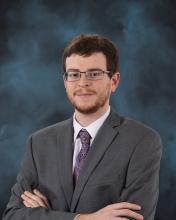
Joe Fortenbaugh is designing, developing, and testing formulations of thermally cured thermosets that can directly and rapidly produce cured composite thermoset materials upon photothermal heating. This type of heating can be used to bring rapid, on-demand curing to a wide range of thermally cured thermoset polymers. The goal is to develop formulations that can be used in additive manufacturing using epoxy resins, polyimide, phenol-formaldehyde, and polyester using composite materials such as carbon fiber, ceramics, graphene, metals, and metal oxides. Fortenbaugh holds a Ph.D. in chemistry from Penn State University.

Actinic specializes in bringing new thermally cured thermosets to the 3D printing market. They take commercially available materials, reformulate them, and develop the formulations for use in 3D printing. These formulations are capable of extremely rapid heating/cooling cycles (sub-microsecond), which allows for these materials to be 3D printed. We are currently expanding our material portfolio and finalizing a custom-built3D printing system. This would be particularly significant for DOD and industrial applications where manufacturing at the point of use will be critical for solving prototyping, supply chain, and logistical challenges.
Critical Need for This Technology
There is an essential need to develop an additive manufacturing technique that enables the processing of purely thermally-cured thermoset polymers and is generalizable to include different types of thermally-cured thermosets. Thermally cured thermosets are widely used in myriad industrial and military applications, such as machine parts, protective coatings, robotics, and medical devices, as they possess high thermal and mechanical stability. In addition, these materials possess attractive features such as being lightweight, ease of manufacturing relative to other high strength materials (e.g., metals/alloys), and inexpensive. Because of these attributes, thermally-cured thermosets currently dominate the traditional manufacturing space for thermoset materials. Highly desirable, however, is an additive manufacturing methodology amenable to processing these materials, as this would enable an “on-demand”, energy-efficient means of their production, which is currently only possible with photo-initiated polymers. AM has been demonstrated as a platform to rapidly fabricate customizable parts. This would be particularly impactful for DOD and industrial applications where manufacturing at the point of use may provide critical capabilities while decreasing and/or eliminating supply chain and logistical challenges.
AquaQuant Laboratories Inc. – Thomas Foulkes
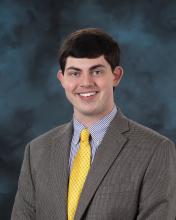
Thomas Foulkes is deploying the next generation of high-performance central processing units and graphics processing units required to feed the power demand for elastic cloud computing, big data analytics, complex simulations, and artificial intelligence. The technology creates a higher computational density by transferring heat with direct, water immersion cooling across nanoengineered, durable, and scalable hierarchical porous coatings deposited holistically on electronics. Foulkes holds a Ph.D. in electrical engineering from the University of Illinois at Urbana-Champaign.

AquaQuant Laboratories Inc. is commercializing scalable nanostructured surfaces to increase the speed (Gflops) and density (Gflops/m3) of high-performance computation through two-phase, water immersion cooling.
Electronics thermal management requires both nano- and macro-scale perspectives. Thomas Foulkes has researched advanced cooling techniques and electro-thermal co-design to increase the power density of converters for electric vehicles. He founded AquaQuant LaboratoriesInc. (AQL) in 2017 to tackle the electro-thermal demands of next-generation data centers.
Critical Need for This Technology
A computer is only as fast as its heat rejection. Even as Moore’s Law has shrunk transistors to atomic scales, servers still operate at the same frequency they did 15 years ago because of thermal bottlenecks with industry-standard heat transfer methods. In response to stagnating speed, data centers have ballooned in land and resource consumption to keep up with exponentially increasing demand from elastic cloud computing, big data analytics, complex simulations, and artificial intelligence.
Moreover, high-performance data centers are a multi-billion-dollar industry and a growing global electrical load. The fraction of US total energy utilized by data centers today is approximately 2% (i.e. ~70 billion kWh or ~40 megatons CO2). Since approximately 20-30% of the average data center power is devoted to rejecting heat, the adoption of new cooling methods should catalyze improvements in computational performance and energy efficiency. Two-phase immersion cooling with water holds promise to address both customer needs.
Erica Grant – Quantum Lock Technologies LLC

Erica Grant has a BS in physics from Virginia Tech and is currently a 4th year Ph.D. candidate studying quantum computation at the University of Tennessee on track to graduate in December 2020. At Virginia Tech, she was a leader in a service organization dedicated to educating safety and awareness. Through that organization, she met individuals whose stories were moving. In graduate school, she became interested in the DefCon hacking conferences which published seminars on YouTube that demonstrate security weakness in nearly every field. After learning of the weaknesses in smart locks and how they can be exploited, she clearly saw how her knowledge of quantum information could be applied to securing connected devices.
Connected devices bring improvements in convenience and efficiency to a business/industry but every new line of communication offers a point of weakness for cybersecurity attacks. An example is in a manufacturing smart factory where there are entrances that need access control and machines that are given automated tasks. Quantum Lock is creating security for connected facilities and equipment by using quantum physics to tap into the randomness of particle behavior to create completely unpredictable digital keys to facilitate communication between devices. Their hardware-software solution connects all equipment and entrances to a centralized hub which encrypts all communication with the quantum digital keys and detects anomalies with a connected ledger.
Critical Need for This Technology
Quantum Lock Technologies is a patent-pending hardware-software solution focused on developing enhanced security for connected facilities and equipment by utilizing completely random keys generated from a quantum random number generator (QRNG). Our target market to investigate as part of Innovation Crossroads is the manufacturing sector. Every year nearly 50% of manufacturing facilities are hacked into and 12% have no security measures in place to prevent cybersecurity attacks. In fact, 35% of all cyber-espionage attacks target the manufacturing sector. Manufacturers have valuable proprietary information that they need to protect. As the factories move toward better automation through connectivity, there are more lines of communication that increase vulnerability. These issues have attracted the concerns of the Department of Energy who announced a $70m FOA in 2019 to build a cybersecurity institute to address the security concerns of smart factories because their increased automation can save the U.S. $25 billion per year in energy costs. With Quantum Lock, the communication of connected devices in manufacturing facilities would be secured and thus proprietary information would be protected allowing facilities to save energy costs through automation.